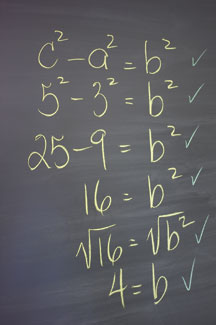Arts
Indian Teachers In Connecticut

| Satya Mohan never saw students dance in the hallways before, let alone bang on lockers and doors as they often do outside his third-floor classroom at Bassick High School.
Eight-and-a-half months into the school year, this teacher from India has grown used to it. “Excuse me, off to your room,” he tells a student who doesn’t belong in his fifth-period science class, before motioning him out and shutting the door. The dozen students who do belong in the class then set about the task of finishing an assignment on polymers and recycling. Mohan circles the room, frequently reminding students he is looking for their researched opinions on articles they are reading. Darren Thompson, 15, a freshman who hides a love for science behind a red baseball cap, shades and a gold chain, called Mohan a good teacher. “He explains things to us,” he said.
Of 14 math and science teachers from India who started the academic year in Bridgeport through a three-year recruiting program, 13 remain. A dozen plan to return to city classrooms in the fall. One went back to India, and another asked the state to find her another district in which to work. Carol Pannozzo, director of human resources for the city’s school system, said the Indian teachers originally assigned to Cesar Batalla School had a hard time adapting and lacked the classroom management skills needed to cope with middle-school students. The teachers assigned to Bassick and Harding high schools fared better. “Has it been challenging? Absolutely,” said Pannozzo. She also called it worth the effort. Faced with a chronic shortage of math and science teachers, Bridgeport was the only urban district in the state to take the state up on an offer to accept teachers from India. In February 2007, Mary Ann Hansen, the world language consultant for the state, along with Sharon Pivirotto, a teacher recruiter for the city’s schools, traveled to India to interview and select teachers, all of them proficient in English and certified. Before the start of school, all expressed excitement and optimism about the task ahead of them. Those who remain say they are now more confident and wiser. “So far, so good,” Mohan said of his experiences on a recent day after school. Around his room are project boards left over from the city Science Fair in March. Next year he hopes to start working with students earlier in the year on projects in hope of a better outcome. “Science fair I love that,” said Mohan, adding he liked to take things apart when he was young and figure out how they worked. He doesn’t see that as much today in students, here or in India. “The focus has shifted from education to entertainment,” he said. In India, students know their limits and check their personal lives at the classroom door, the teachers said. Not so in America. Some of the Indian teachers have learned to stand their ground in the face of students who shout obscenities and pound on desks. “Some call me bad. I make them do a lot of work. They don’t do the work, I say, ‘Don’t expect a pass from me,'” said Mohan. They’ve come to know that on days before school vacations, when teachers are most intent on completing units, most students are not in the mood to work at all. Ravi Patankar, another Bassick science teacher, said he’s come to see that, in most cases, students are not bad, but instead tend to be unfocused. “We try our best to help them and make them do their work,” said Brindavani Tallur, a science teacher assigned to Harding. Sometimes that means listening to problems that often have nothing to do with academics, she said. Tallur has also found the best strategy is to have classroom rules and be ready with consequences for those who choose not to follow them. In 17 years of teaching, Tallur has never had to try so hard to enforce rules. She makes it her habit to stand at the door before each period and personally greet each student into “my science world.” Vivek Ghonasgi, who teaches math at Harding, said what surprised him most is that some American students don’t know why they are in school. “I try to tell my freshmen I’m here to give you something that will take you through life. A few of them are getting that,” he said. Mohan said he knew coming here would be challenging. But “most, 98, 99 percent, are respectful,” he said of his students.
In India, teachers introduce a topic, then give students a chance to ask questions. Here, students learn by doing. There are many more hands-on activities. The Indian teachers like that. “To be really effective here, you have to change your teaching strategy every 8 to 9 minutes,” Mohan said. The teachers say that American classrooms also do a more effective job using technology, something they hope to share with colleagues back home at the private schools where they teach. Three years of international experience will also give the teachers leverage to make more money back home. Pannozzo said things started turning the corner for the Indian teachers after the Christmas break. It was then that some of them were joined by their families. Most have moved from the couple of apartments they rented at the start of the school year. Some have acquired cars. Pannozzo said the Indian teachers have gotten a lot of support from other city teachers and their principals. The visitors all said they’ve gotten guidance and support from their American colleagues. Tallur, who teaches at Harding, said her happiest moment so far was a recent day when her principal, Carol Birks, gave her a framed certificate for doing a good job. She pulled it out of a briefcase to show a reporter. Mohan said next year his goal is not to be known as “the Indian teacher,” but simply as “Mr. Satya.” “Or Mrs. T,” agreed Tallur. |


